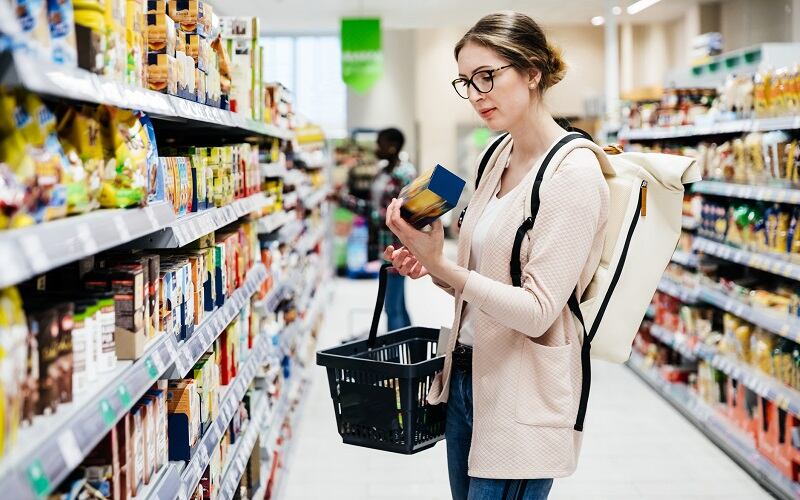“Consumers have adopted a variety of approaches to eating and drinking, and it's very pronounced with lower income [consumers] getting more savvy because they actually know how to navigate the system. So, they know how to leverage [different] supplements, maybe it's SNAP, maybe it's WIC," Wyatt said. "And middle income [has] been forced to really develop thrifty habits."
Consumers feel the economic pinch, but trading down has its limits
As consumers of all socio-economic statuses look to navigate higher grocery costs, “middle-income consumers ... [are] the ones that are really getting squeezed,” and they are looking for ways to save money on their grocery bill, Renee Ryan, principal analyst of consumer and shopper insights at Circana, shared on the webinar. Lower-income consumers have already had the experience of navigating the grocery aisle looking for deals and the most value for their dollar, she added.
“When you think about lower-income households, they're used to making changes because they've had to cut back, and they also have had the benefit of SNAP and WIC, where the lower-income households are more likely to be eligible for government assistance. So, they are doing things like stretching their meals, buying low-cost products ... They're also eating smaller portions, so they can save more for leftovers.”
When it comes to how concerned consumers are about food inflation, Circana found 60% of lower-income and 52% of middle-income houses say they are extremely concerned about food inflation, while 51% of upper-income families said that they were somewhat concerned about food cost inflation, Ryan said. While 38% of all consumers expect it will be worse in a year versus now, 49% of lower-income households already describe their financial situation as worse this year over last year, she added.
Many consumers are continuing to trade down to private label brands or into less expensive categories, especially for those with a lower socio-economic status, Ryan said. "Private labels dollar share has 14.6% of all households ... and with the downtrodden group, which have a very bleak outlook as well as a low income, the private label share is even greater at a 15.3%," she added.
However, trading down does have its limits, as consumers balance health and dietary needs and opportunities to indulge, even for those in the “downtrodden group,” Wyatt said.
“When there is a need, whether that's a dietary health or just a wellbeing need, then we have seen consumers still invest despite the headwinds.”
For example, center-store unit sales with cage-free claims grew 41%, pasture-raised by 13%, and grass-fed by 3%, according to SPINS data cited in the webinar for the 52 weeks ending June 18, 2023. Additionally, vegan claims grew 35%, paleo 18%, sprouted 5%, and allergy-free 4%.
Consumers look to coupons, but CPG brands should rethink approach
While 33% of the general population is looking to coupons, middle-income consumers are slightly higher with 41% using them, according to a Circana June 2023 survey, Ryan shared. Similarly, 22% of middle-income consumers say they are buying “bigger packages at a lower cost per unit,” as opposed to 20% of the general populace, she added.
However, the lift that CPG brands see from promotions and coupons are significantly down compared to before COVID, Wyatt said. Beverages saw a 110% lift in 2019 as opposed to an 80% lift for the 52 weeks ending June 18, 2023, while general food saw a 98% lift in 2019 vs 77% now, and frozen 113% vs. 95%, according to IRI POS data, she added.
"We didn't have a lot of promotions during ... the back half of '20 and '21, and we started to see more in '22. But the problem is we weren't going deep enough. And so we need to be able to get depth of promotions and get them not only back close to where they used to be -- because we're starting to see that now -- but we need to be able to drive ... penetration, drive buy rate ... or the frequency."
Consumers also are saving money by leveraging online shopping platforms to find the best deal, which is growing units and dollars for the channel, Wyatt explained.
While dollar sales are up across brick-and-mortar and online, the total store is seeing a 6.8% increase in unit growth, with beverages growing by 8.3%, general food by 7.9%, refrigerated by 7.7%, and frozen by 3.8%, according to Circana Omni Channel data. Additionally, when gas prices increase, "online gets a little bit of a bump because you might not want to have to go to the store in a car to get what you need," she added.
“You had SNAP-enable EBT over the last couple of years, so you've got SNAP users using. [Online] is the place where consumers go to do price compare, and sometimes, they just buy, and they can be doing at a brick and mortar using their online services, or they can be doing it with a pure play.”





